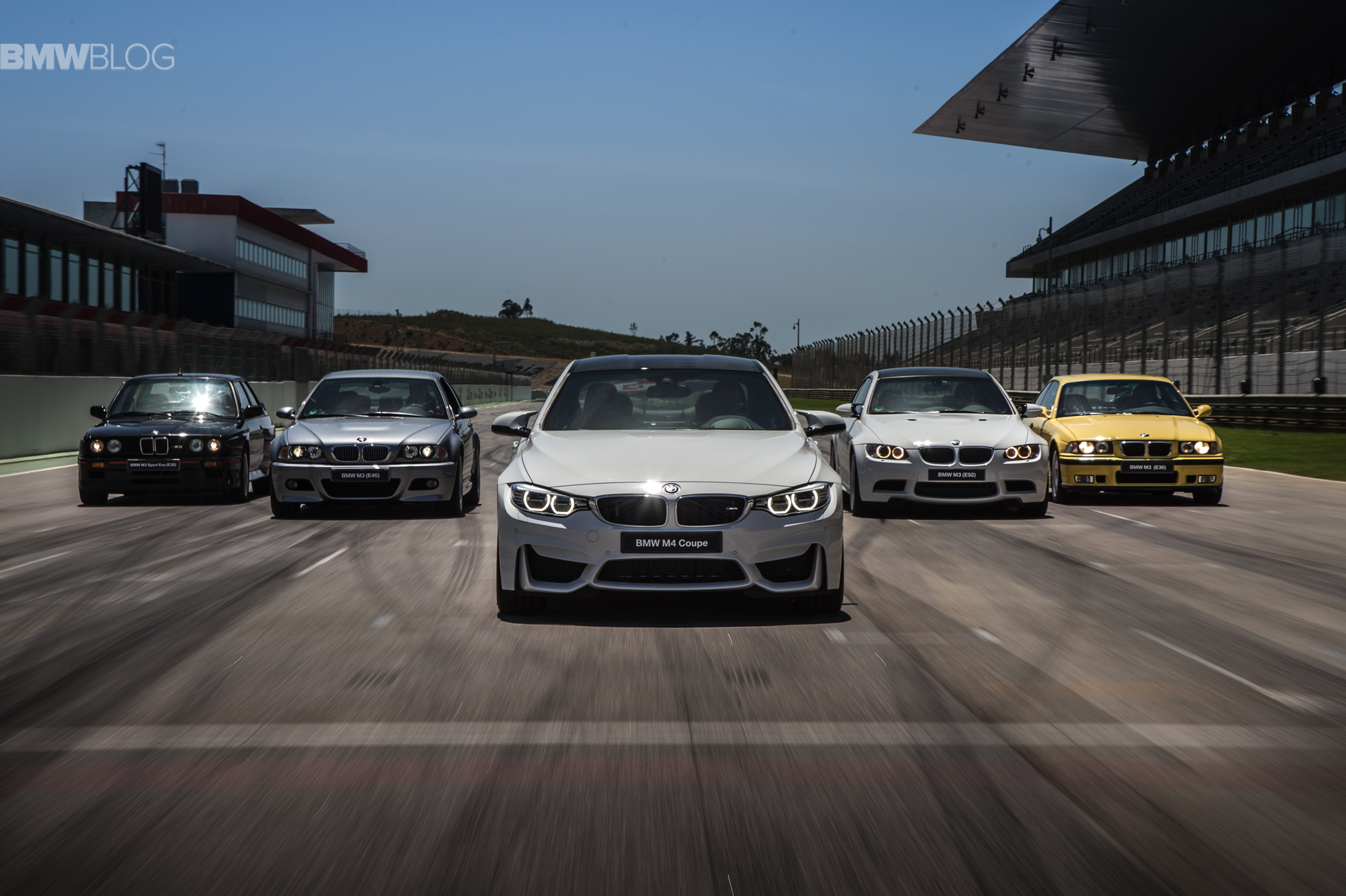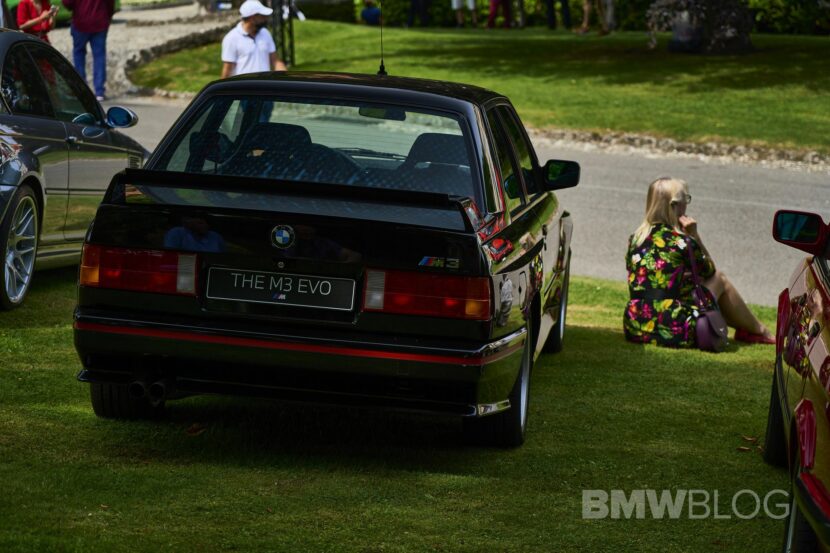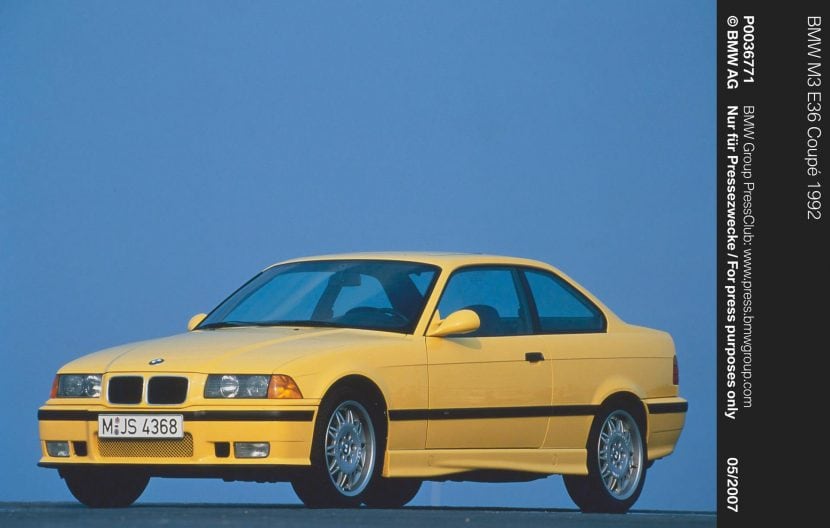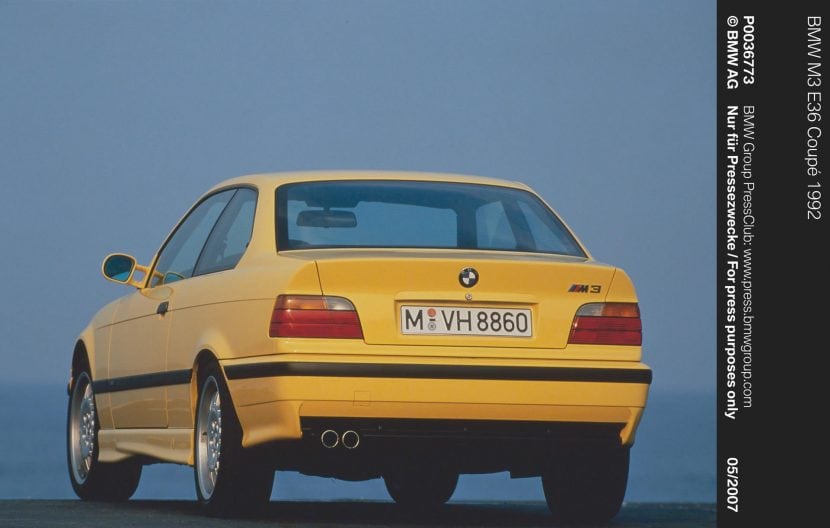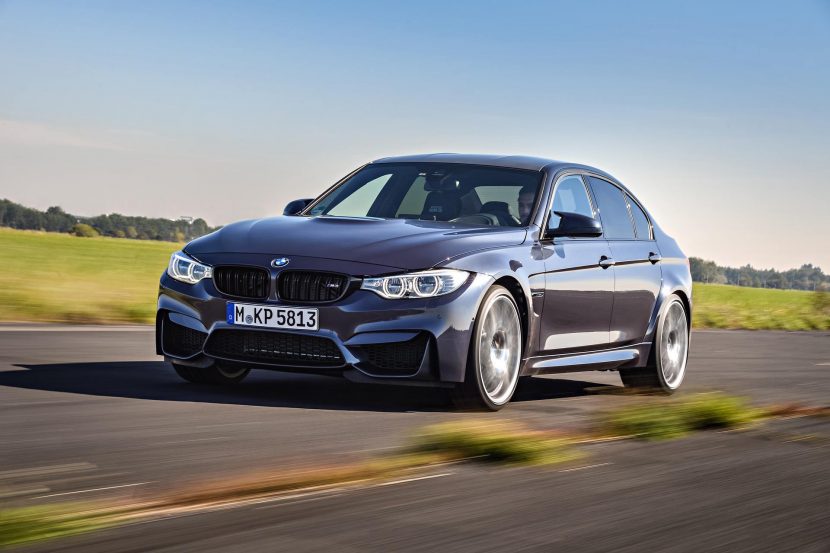BMW is officially celebrating the 50 Year anniversary of BMW M in 2022. This compels one to look back at one of the most iconic BMWs to have ever been graced by the M division – the M3. From a naturally aspirated four-cylinder engine to the twin-turbo six cylinder and beyond, the M3 has always promised a balance between handling and straight-line performance. In separate generations proving not only to be the most successful touring car in history, but the best-selling M product of all time, the M3 has come a long way since its humble origins in 1986.
And if you’ve never driven an M3, you might be wondering if the hype is really to be believed. After all – the E30 M3 makes due with around 200 horsepower, which isn’t exactly daunting in todays market of readily available 300 horsepower hatchbacks. Even the mighty V8-powered M3 only launches from 0-60 in around four and a half seconds. Drag strip hero Teslas aren’t exactly losing sleep.
Now, when it comes to the M3, it’s my learned opinion that there’s a lot more to it than looking at the numbers. But even if you’re only in for the bench racing, the G80 M3 – with xDrive testing under 3 second 0-60 times – will surely quench your thirst. To the point: there’s an M3 for everyone, and today we’ll look at which one might be the best for you.
E30 M3
Introduced in 1986, the E30 M3 currently represents one of the worst values possible in terms of by-the-numbers performance. 0-60 takes half of the average male life expectancy and the four-cylinder S14 engine is good to generate 192 horsepower and 170 pound-feet of torque, which barely even registers in today’s horsepower wars. What does register is the car’s sub-3000 pound weigh in and 7250 rpm redline. Special editions – now importable to the US – do a little bit more, with top trim (and top price) Sport Evolution models providing a glorious 235 horsepower.
Though the E30 M3 is tempting as a momentum car, prices have skyrocketed and make good examples a bit hard to justify. Anything under 100,000 miles will command a price somewhere around double its original $34,000 MSRP. If you’re looking for something reasonable – the E30 M3 simply isn’t it.
Cost to repair can be high, miles are expensive (i.e., every thousand miles put on the car will depreciate it measurably), and the car simply isn’t very fast. Its charm lies in not only its unassuming and now iconic looks, but its confidence-inspiring dynamics that allow it to be driven constantly at 9/10ths, wherever you are. The E30 M3 remains the kingpin of high dollar M3s – commanding up to a quarter-million dollars – and is worth ever penny, as long as you can afford to spend it.
E36 M3
Certainly the wildcard in this article, the E36 M3 came to North America in 1995 with a neutered version of the RoW (rest-of-world, read: outside of North America) S50 engine. Good for 240 horsepower and 236 pound-feet of torque, it’s a questionable value proposition over the 328i, which offers similar weight balance and just thirty horsepower less.
But it does offer a much different driving experience – with different suspension and brakes, power delivery and a differential, interior, and other small tweaks, the M3 rapidly sets itself apart from the non-M brethren. And RoW M3s make it even more confusing – offering up goodies like individual throttle bodies and up to 321 horsepower, but real-world performance that doesn’t wildly differ from the North America cars.
On paper, a RoW E36 M3 strikes the perfect balance of amazing power and weight balance, uniqueness, general reliability, and price. But in reality, parts can be very expensive, real-world performance isn’t drastically different, and I’m never quite convinced it does anything better than its successor, the E46 M3.
But it needs to be said – the ZF five-speed manual is a drastically better shift feel than the Getrag in the E46. And the E36 weighs just a little bit less. And the interior is a little bit more Spartan, and either engine – North America or RoW – is just a bit more stalwart than the E46’s S54. Thus; the E36 M3 is the perfect M3 for the person that wants most the drama of the E46 M3, but half the headache – which for some, will be plenty.
E46 M3
The E46 M3 is what most automotive literati would refer to as an “icon”. It’s a cliché, but it’s in character with the rest of the recycled praise that the chassis receives. The fantastic S54 inline-six is an aural experience unrivaled by any other M3 – except for maybe one – and the car revs freely to a nearly 8000 rpm redline. It only came in coupe or convertible form and shared very few parts with the non-M 3 Series – making it feel a lot more special. Tack on the optional “Competition Package” for goodies like higher-performing brakes, wider wheels, special traction control modes, and more.
But with every rose-colored sprint to red line comes a whole lot of thorns. The E46 M3 is an insanely enjoyable driving experience when it’s functioning correctly. But generally, that will take a lot of time, money, and mechanical know-how to fully enjoy. It’s my opinion that if you can’t afford a new BMW, you probably can’t afford to maintain an E46 M3, due to the scope and range of issues the car can experience.
Especially when coupled with the “F1 inspired” SMG automated manual gearbox. Thus, the E46 M3 is my recommendation for someone who really wants to enjoy the car that solidified the M3 as an “Ultimate Driving Machine” – and has the time, money, and/or experience to back it up. It’s easily the most balanced and arguably the most rewarding to drive M3. But, it isn’t for the faint of heart. It’s going to break, a lot. And from a stoplight, you’re still getting smoked by grams in her TRD Pro Camry. If you aren’t concerned by any of that – the E46 M3 is probably for you.
E90/F92/E93 M3
The E90, E92, and E93 M3 introduced a mighty V8 engine to the M3 lineup. They’re the only ones that get it, and while the “race-inspired” pedigree is often used as marketing speak for “the race team looked at it once”, the S65 really walks the walk. The 4.0 liter V8 weighs under 500 pounds – notably, about 30 pounds lighter than the preceding S54, with two less cylinders. And it was made in the Landshut foundry – the same manufacturing facility responsible for the BMW Sauber Formula 1 motors.
Don’t forget it revs to another planet, with an operatic crescendo to 8300 rpm and a peak horsepower of 414. That’s not bad, but the E9X M3s get even better. Think, a glimpse into the future. Features like a carbon roof, modern navigation systems, a competent automatic transmission, and electronic damping all make widespread appearances for the first time on an M3.
Though not without its flaws, the E9X M3s do a great job of bridging the gap between the sterile-feeling later generations of the M3, and the slow-but-engaging feel of the older cars. The E9X M3 is perfect as someone’s “second” BMW – i.e., you’re familiar and prepared with maintaining a German driving machine, and ready to get your hands dirty and wallet empty.
It’s a hugely rewarding car to drive – but it weighs a bit more than the E46 and drives a bit larger. The E9X also works as a decent daily, especially when left stock – just be careful with maintenance. Plus, a model with no navigation and DCT offers up one of the most exuberant driving experiences ever offered. It’s not a compromise – it’s a Swiss army knife with a banshee-scream V8.
F80/F82/F83 M3 and M4
After four generations and nearly three decades of naturally-aspirated M power, the F80 M3 debuted with its twin-turbocharged S55 engine. And it made a lot of people mad – heck, still does. But it’s tough to fight the numbers, with 444 horsepower in Competition Package guise on tap, and a wholly irresponsible 406 pound-feet of torque available from just 1850 rpm. The result? The F80 M3 and F82/83 M4 Coupe and Convertible could do burnouts and induce oversteer like no M3 preceding it, occasionally to the chagrin of the 0-60 bench racing crowd.
Change is everywhere in the F80 and its platform mates. There’s no more hydraulic steering; there’s no option that eliminates the big screen in the center console, and you’ve got adjustable drive modes on the fly, controlling everything from throttle response to suspension stiffness. Making it even more of an outsider in the M3 world is that it hardly ever breaks; aside from various gaskets, there isn’t a whole lot that commonly fails on these cars, even many years later.
Thus, the Jekyll and Hyde F80 and friends are the perfect choice for someone who just wants a great performing car. The ever-present screen distracts from the driving experience a bit, but the convenience pays off in the daily drive. And Hyde is right around the corner – ready to launch into a burnout at literally any point. It’s also a fantastic car for someone who wants to be sideways more often than not. It also makes a great one car solution – especially in four door M3 guise, being exciting enough to take on purposeless weekend drives but practical enough to cart your friends to the pub and back.
G80/G82/G83 M3 and M4
The G80 M3, and G82 G83 M4 coupe and convertible, are finally here. And unfortunately, I just don’t have a lot to say – they offer much of the same advantages as their predecessors. Finally receiving an available xDrive AWD system makes this car the fastest around town, and the grippiest in the corners, of any M3. For performance seekers and raw number crunchers, there is no substitute – the newest is best.
And like every other M3 and M4 before it, there’s an audible group screaming at the top of their lungs to anyone that will listen that the feel is gone. The flame has been extinguished, and BMW M has yet again lost their way for the 50th consecutive year. But the numbers don’t like – on paper, the G8X is the best performing M3 and M4 that has ever been produced. And if that’s the kind of statement that you want to be associated with, the G8X cars are the ones you should own. In fairness, it’s also a fair guess that they’ll be pretty reliable, as so much of the engine is based on knowledge gleaned from the S55 development cycle.
Conclusion
Hopefully, you learned a little bit about an M3 or two today. And if you’re considering buying one, hopefully this guide gave you a good bit of insight as to what each car does best, and what it may represent to other enthusiasts. That being said – the best way to find out is to drive, and I encourage you to drive as many as you can before settling on one. Happy hunting!


